Mick Whelan is not quite what you’d expect of a trade union leader. For a start, there’s just as much football memorabilia in his office as there is union history, although his office (just around the corner from London’s Farringdon station) is still adorned with banners and mementos of industrial struggles past.
There is no doubt that this is the office of a senior trade unionist, although an hour’s conversation with Whelan reveals that he couldn’t be further from the traditionally-portrayed caricature.
Aside from his clear passions, his focus as General Secretary of the Associated Society of Locomotive Engineers and Firemen (ASLEF) is purely about representing Britain’s train drivers - an occupation that has changed a great deal even in the 34 years that RAIL has been in existence, and massively so since the end of main line steam.
“Our identity is very much around train drivers,” says Whelan. “We do work with other trade unions, but we have defined policies of our own.”
While in the past there have been loose federations of rail unions, Whelan asserts ASLEF’s specific role within the wider rail industry - and speaks with passion and quite a bit of personal knowledge and experience about the role of the train driver, both today and in the past.
“There is a real identity among our membership. It is not a transferrable skill - you are either a train driver, or you are not. We’re a craft trade union. I try not to use the word professional too much, because it gives the wrong impression.”
Although undoubtedly a train driver has to be seen as professional, in order that he or she has the confidence of the travelling public, perception matters. So what does Whelan believe is the public perception of his union?
“People do have a vision of trade unions. It’s a different world. We are still (because of what we do) incredibly blue collar. Our people are very community-based. There are areas where there are still railway towns, where the main employer is the railway.”
But Whelan also believes that ASLEF exists as a pressure group, as much as anything else.
“We want investment in the industry. We do see it as a safer, greener option. The real problem is that we don’t see it as a long-term strategy from governments of any colour, looking 20 or 30 years down the line. In those areas, we very rarely get reported unless it’s to be negative - they will use one line out of context.”
That doesn’t dampen Whelan’s pride in the profession or, as he puts it, the craft of a train driver.
“We have a vision that we are stakeholders in the industry. No matter what system or model you have, it doesn’t happen without us working in partnership with the industry itself. And we do. At times like Hatfield , we would have had no railway system if we hadn’t kept the trains running.”
For Whelan, this is an example of ASLEF not getting “kudos” for when it works well with the wider industry. For example, the London Olympic Games in 2012 met with press stories about “trade union barons demanding money for flexibility”, to which Whelan responds: “In any walk of life, when people do more, you expect recompense for it.”
That approach goes with London Underground’s plan for the Night Tube from September this year, with all-night running on most lines.
“I believe a major city like London should have a 24-hour service. But I think if you’re going to do it, you do it properly. You invest in the workforce, you invest in the rolling stock, and you invest in what’s needed to do it.
“You don’t make a bland announcement that you’re going to start in September, and start talking about it in March, and then when you’re worried about the truncated timescales not working, start putting the blame on the people you’re going to need to negotiate with to get where you need to be. It’s intriguing how all this gets leaked. They want people to do more, but we are condemned.”
He adds: “We see projects like the 24-hour Tube as an opportunity for growing our membership base. If you’re going to run more trains more often, I would expect more train drivers, not less.”
However, Whelan has concerns about the safety risks that the Night Tube may represent.
“How you could do it safely without importing risks of fatigue or whatever, without stretching the basics that you have, I don’t understand. I wouldn’t expect the existing workforce to go beyond - they’re stretched now by what they do.”
Whelan notes the considerable amount of money for investment within the Tube, “which again we welcome”, adding: “I want better trains. I want better services. I want safer railways. But when it comes to the manning of them and how we’re going to resource it, that becomes a different question.”
There is undoubtedly a need for more drivers. But how do you make sure those new drivers are drawn from diverse backgrounds?
Whelan points out that 2015 marks the 15th anniversary of what ASLEF calls its representative committees - its Womens’, Lesbian, Gay, Bisexual and Transgendered (LGBT) and Black and Minority Ethnic (BME) group.
And drawing on an internal study from 2012, he believes that the railway should reflect the communities that it is drawn from.
“It showed how poor we were as an industry. The reason we did it was that we wanted to hit the HR directors. We have 95% density - virtually every train driver in the UK is a member of ASLEF. We’re willing to work with anybody to change it.”
Nevertheless, that membership remains overwhelmingly white and male, although ASLEF is keen to change this.
“We can only draw our membership from who they employ. If there’s an issue over diversity in the industry, we’re willing to work with anybody to change it and work on it.”
Whelan cites ASLEF’s work with Transport for London, and London Overground. Northern Rail, too, “has been very proactive in seeking to work with us at this level”. ASLEF also partners with groups such as Women In Rail.
“We actively go out and seek to do these things. We’ve had all sorts of initiatives working hand in hand with employers, such as at Stratford, looking to recruit people from the local community.”
The cultural barriers are still there, however. Whelan recounts one anecdote about a train operating company placing an advert in Cosmopolitan to try to recruit more women train drivers: “A woman opened a magazine, saw the advert and said to her husband ‘you should try this’.”
Clearly, there remains a lot of stereotyping. And Whelan believes that many people still don’t understand the job of a train driver.
“There was a time when there were physical barriers. In the days of steam, and even when you had much more hauled stock when people would have to lift heavy couplings, not every woman was ideally suited to it and the physicality of the role.” But that has fundamentally changed: “Most trains are step on and step off.”
The inevitable shift work is a deterrent. Whelan acknowledges: “We are a 24 hours a day, seven days a week industry. That puts an awful lot of people off.”
Age is also a factor - it’s not just about gender and ethnicity, but also youth. According to ASLEF’s own study, the average age of someone coming into the industry now as a train driver is 36, and Whelan is keen to get youth back into the industry.
“We’re out there campaigning to go beyond modern apprenticeships, creating real processes possibly along the old Youth Training Schemes whereby people come in for 18 months, multi-task, and find out where their career map lies, whether it is in engineering, operations, retail.”
Yet Whelan recognises that would probably generate very few train drivers.
“With my slightly cynical head on, the HR functions look at the cost. It’s very expensive to train a train driver, and it takes a long time.” Recruiting later in life, on the other hand, means people are settled with mortgages and families, and thus the dropout rate is far lower.
“We’ve done many things, from making sure that maternity leave at some companies is up to 52 weeks of full pay, movement on adoption, fostering, family-friendly policies, primary caring and job sharing. We’ve had policies on these things for more than a decade.”
But why would you employ two people to do one job - as can be the case if all shifts are to be covered?
“If you invest heavily in the training of somebody, you don’t want to lose it. You don’t want people out there whose focus is affected on a safety-critical role.”
Even so, it’s not necessarily an easy industry to come into unless you’re prepared for long and unsociable hours. Says Whelan: “Perversely, our demographic has fundamentally changed because of the salaries we now generate and the quality time-off. We sold massive amounts of productivity to ensure that when you’re not working, it’s time clear from duty. Fortunately, we are a growing industry, and there’s always been demand for overtime.
“Our ideal world is where people come and do their core hours and enjoy their quality time with their families. Most of the time, to help the companies ensure that the trains do run and that the freight is moved, they are flexible. Now they are being paid for it, but that demand is there. People don’t see what people have to do to keep the trains running.”
But isn’t there a big health and safety implication of people doing lots of overtime?
“We do an awful lot of work on fatigue, and we do worry about it. When we gave the maximum amount of productivity, we moved away from the eight-hour day with a fixed break to ten to 11-hour days, so people could run more trains more efficiently.
“The intention was that they would only do a limited number of additional turns per week. We do work with companies to make sure people don’t do excessive hours.”
“A train driver, the day before they come to work, the day isn’t really theirs. They don’t have the same rights as someone who isn’t involved in transportation. While your family might want to do one thing, there are certain things you are prescribed from doing. Your family have to support you and what you’re doing.”
This relates back to what Whelan says about train driving being a craft rather than a profession - almost a calling, perhaps. Whelan strongly holds the view that train driving is blue collar - a term that is not necessarily fashionable in a service economy, although ‘service’ is precisely what train driving is: “White collar workers were lawyers and accountants - professions that were clearly defined.”
Even a degree is nothing compared with the ongoing assessment needed for a train driver.
“I believe that the underpinning knowledge which drivers have to have equates to more than a degree,” says Whelan, who points out that train drivers are currently graded at National Vocational Qualification (NVQ) Levels 2 or 3.
“We’re tested on it continually - obtrusively and unobtrusively - far more than any other section of society.”
Once you’re a GP, you’re a GP. But if you’re a train driver, “you have to demonstrate consistently your ability and your responsibility to do the job”.
According to Whelan, train driving is different to many jobs where skills are awarded for a specific activity: “I see us, bakers and certain other skill sets as crafts. In this day and age, there are no safety nets any more.”
Train driving is perhaps one safety net - an occupation with a low turnover and a job for life if ever there was one, even if newer recruits are starting later into their 30s. How did Whelan get to where he is today?
“I left school and went into banking, then travelled around Europe with friends, ran out of money and then came back.”
Upon his return in the early 1980s, there were accounts clerks jobs going at Willesden depot on British Rail.
“It’s one of those typical BR jokes. I turned up to the interview with a friend of mine. The interviewer asked ‘why do you want to be a guard?’ and I said ‘I don’t’. He said ‘we’ll put you on a guard’s course and transfer you to a clerical grade in a couple of weeks’. The rest is history.”
How has the job of a driver changed in the 30 years since?
Whelan avoids the heavy politics of nationalisation versus privatisation, but notes: “Salaries have increased. People underestimated the amount of resources they would need at privatisation.”
The reality was that the industry was desperate for the flexibility to run many new services. Whelan recalls: “When I was a driver at Stonebridge Park, it was a mixed traction depot. If you had the skills, one day you could be driving a freight train, the next day covering an InterCity from Euston, the next day a Class 2 Richmond-Woolwich or Euston-Watford. If they were short of someone at Rugby, you’d pick up a train at Rugby and take it back to London.”
Once the industry was split up into many constituent parts, he recalls: “You were trapped wherever you were. I was trapped in Railfreight Distribution, which was going to be the Channel Tunnel company - and the Channel Tunnel company wasn’t even open. We were sitting there with very little to do, watching the trains we used to run stand idle because we didn’t have enough people to do it.
“That then drove the companies to go on a massive recruitment drive. We got heavily involved in recruitment and retention. When people talk about our salaries - no one gave us anything.
“I love this idea that ‘your salaries have doubled’. Well, yes, but productivity has more than doubled. The shape of the new railways needed different things. We sold things to
get it.
“On certain issues we did quite well, but on other issues we’re fighting a rearguard battle to get some of those things back.”
Twenty years on, many train companies remain vastly reliant on voluntary overtime.
“Our policies want all work included within the roster, agreed and contracted for. We don’t want this little gap when there’s a shortfall all the time, which leads to the occasional industrial or other issue.”
Rest day working should not be encouraged either: “What we never want to go back to is the period of time when people had to work to live and work every single day. People were allowed to work 28 days on the trot or more. It was only after the Clapham Junction disaster that people had to have one day in 14 off.
“What we sought to do was ensure people were remunerated enough that they didn’t have to work all the time. So we have a policy that we ensure companies are training. Our members only work rest days when companies are recruiting, to facilitate flexibility for recruitment and training to take place, or if there is major infrastructure works. Because you wouldn’t recruit people to lay people off, or if there is a major railway issue when it’s all hands to the pump.
Such policies have helped ASLEF grow its membership base. But in a perfect world, surely there’d be no need for trade unions?
“The Confederation of British Industry recognises that organisations that have trade unions are far more productive than those that don’t. Having structures in place that allow you to deal on behalf of people on pay, and deal with grievances in an effective manner, and deliver what changes you need organisationally. And 95% of the time we are operating in concert with people.
“We don’t get identified for the good work that we do. People don’t often look at the reasons that things happen. When was the last time we went on strike?”
“Errr, last year?” I query.
“I think that was the RMT. Why would you be fearful of people? Political parties are like trade unions. Just a different sort.”
- This feature was published in RAIL 774 on May 13 2015

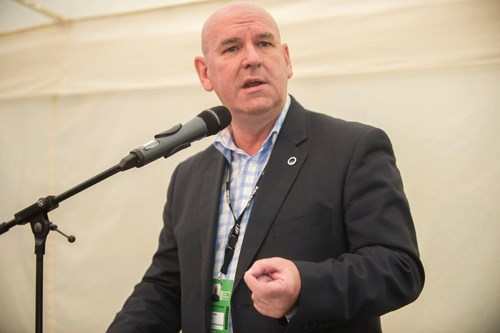
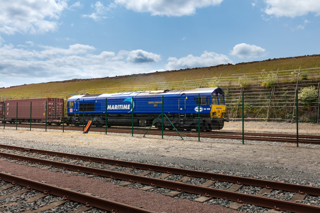
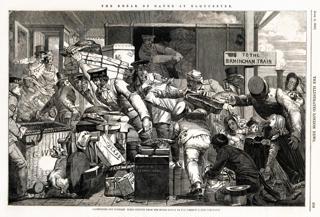
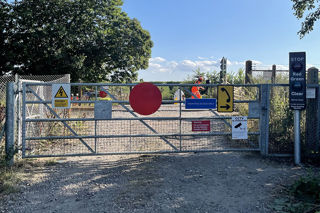
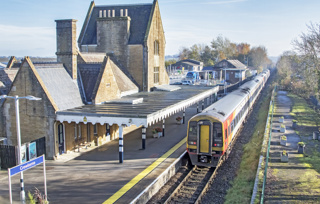


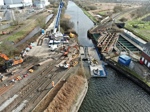









Richard Dickinson - 26/08/2023 09:22
I was at Stonebridge Park from 68 to 77 and previously at old oak common from 61 until 68 what is micks footplate experience and depos he worked at.